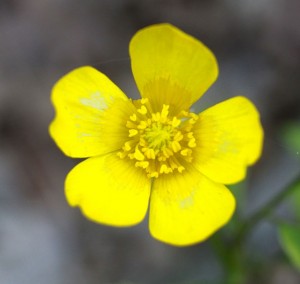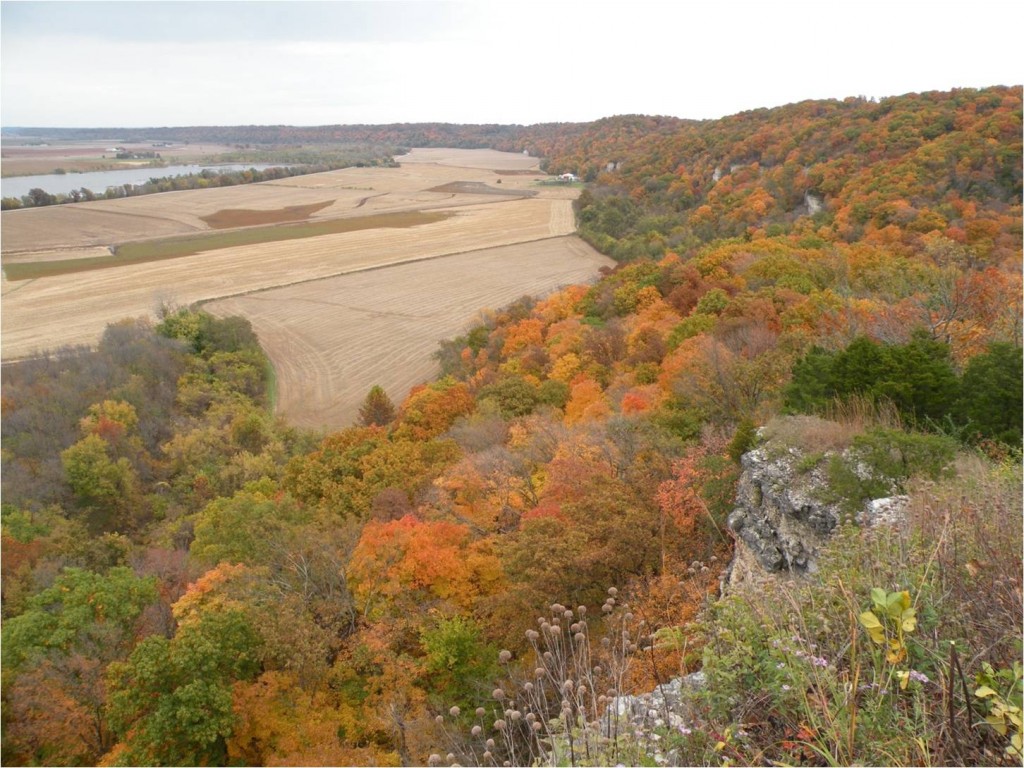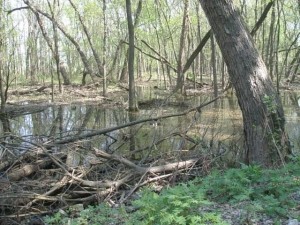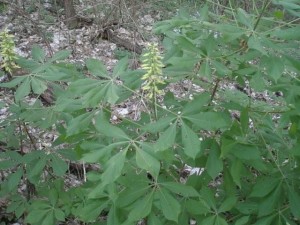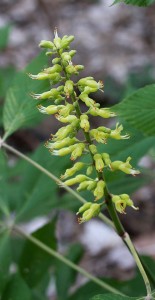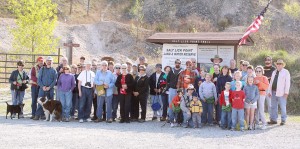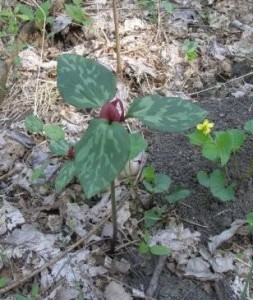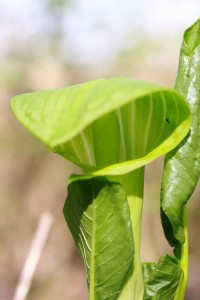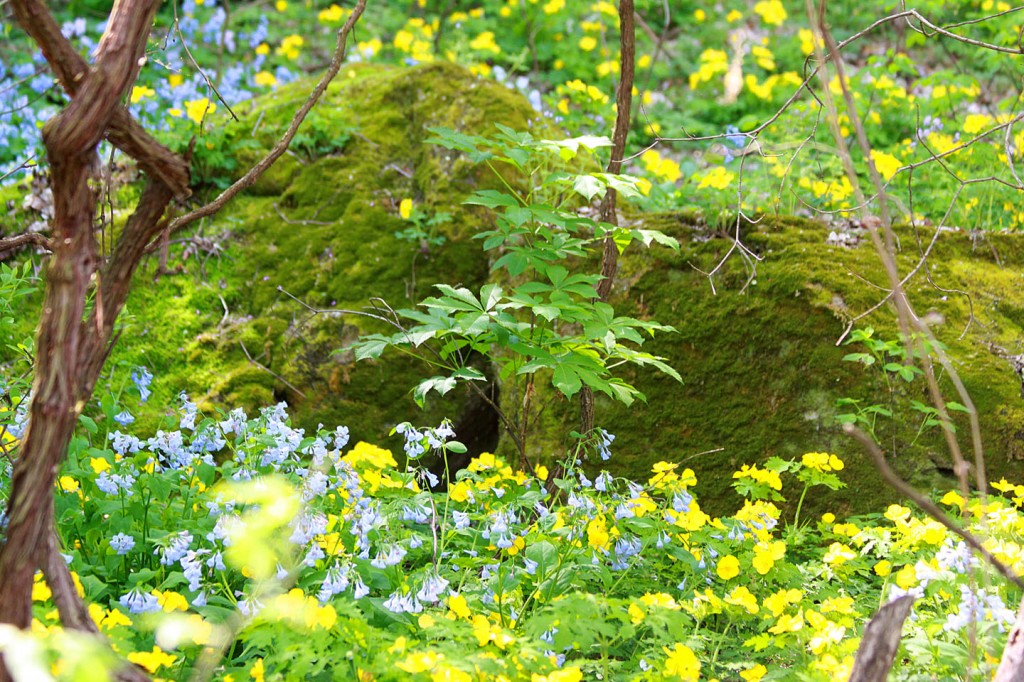An Area Natural Treasure, Salt Lick Point is Perfect Spot for a Relaxing Hike
The Village of Valmeyer’s Salt Lick Point Land and Water Reserve is one of our area’s premier natural treasures and stands as testimony to the creative power of collaborative cooperation between government, citizens and non-profit organizations to protect our natural areas.
After the Flood of 1993 devastated the original town of Valmeyer, the village decided to relocate the community out of the floodplain and onto the adjacent bluff lands. The village purchased about 1000 acres of bluff lands from Columbia Quarry Company and built new Valmeyer. A decade later, with the help of the Illinois Nature Preserves Commission, the Illinois Audubon Society and grants from the Illinois Clean Energy Community Foundation and American Bottomlands Conservancy, the village has placed 750 acres into permanent protection, the Salt Lick Point Land and Water Reserve.
The reserve contains 12 hill prairies and seven limestone glades, covering approximately 50 acres, and 700 acres of mature, upland forest. Two of the glades are very large by Illinois standards, with one spanning ⅔ of a mile. The reserve includes the highest point in Monroe County, Salt Lick Point, at 810 feet above sea level. The bluff tops, with a commanding view out across the American Bottoms, attracted Native Americans, early Euro-American settlers, and, today, continue to awe any seeker of natural wonders.
The glades and hill prairies boast typical prairie plant species such as little bluestem grass, sideoats grama grass, milkweeds, prairie clovers, New Jersey tea, blazing stars, scurf pea, and goldenrods. Several rare, threatened and endangered plant species are also found in the prairies and glades. These include Missouri coneflower, wooly buckthorn, crested coralroot orchid, dwarf bedstraw, whitlow grass, slender heliotrope and stickleaf.
Red, black, white, chinquapin and post oaks, and shagbark, black and mockernut hickories dominate in the reserve’s woodlands. A small stand of extremely rare and endangered shortleaf pine can also be found in the reserve.
The reserve hosts abundant animal wildlife. The state-threatened/endangered flathead snake, great plains rat snake, timber rattlesnake, and plains scorpion continue to live on the reserve. Mammals at home on the reserve include the familiar and frequently seen or heard deer, coyotes, squirrels, chipmunks, skunks, opossums, and raccoons, as well as the less often seen red fox, gray fox, bobcats and badgers, along with numerous small voles, mice, and shrews. The federally endangered Indiana Bat uses peeling-barked trees as maternal roosts during summer months.
Over 150 species of birds can be found on the reserve over the course of a year, including many deep forest-dependent species such as Kentucky warblers, pileated woodpeckers, worm-eating warblers, Acadian flycatchers, and ovenbirds. Wild turkeys abound on the
reserve finding conditions there a wild poultry paradise: the mix of healthy woods with plentiful acorns and the open glades and prairies providing both shelter and bug bite foodstuffs for their chicks.
People, too, find bountiful benefits at the reserve, whether they seek a strenuous hike or leisurely stroll, long-distance views, glimpses of wildlife, a tapestry of flowers, or, a few tasty morels. Thanks to the hard-working efforts of the Salt Lick Point Stewardship Committee, a group of volunteers from Valmeyer and the local area, and members of the Valmeyer Boy Scout Troop, five miles of interconnecting trails criss-cross the reserve, giving people ample opportunity to enjoy the natural wonders. There are two trailhead access points:
From the St. John’s UCC parking lot on Meyer Avenue in new Valmeyer, the 1.9-mile Newman trail takes you into the heart of the reserve. The Newman trail is a moderately difficult hike that winds through forest and glades and out to several hill prairie overlooks.
From Bluff Road, on the bottoms just north of old Valmeyer, to the left off of the Rock City Business Complex entry road, the 1.8-mile Salt Lick Point loop trail climbs up into the bluffs and connects with Newman trail. The Salt Lick Point trail is a moderate to difficult hike.
A new trail, called the Johnson trail, also accessed from the Bluff Road trailhead, offers a leisurely and shaded walk along the base of the bluffs. At the end of this 1.3-mile trail hikers may continue on and upward as the Johnson and Newman trails join. The reserve is open to the public from sunrise to sunset.
While a climb to the top of the bluffs can be a breath-gulping exertion to enjoy the breath-taking view out across the bottomlands, participants on a recent early spring hike along the Johnson trail found themselves breathless with wonder at the sheer abundance and beauty of spring wildflowers bordering the path. Seemingly every inch of space, even the tops of boulders cast down from the heights onto the earth, sported a flower as the rush of warm weather in late March and early April hurried plants into blooming.
Bright yellow Celandine poppies mixed with sky-blue Virginia bluebells bordered by lavender toned waterleaf plants in full bloom all along the trail. Deep red trilliums and tiny white Dutchman’s breeches alongside velvety-purple wild larkspur nodded to the Jack-in-the-pulpit plants’ plainsong sermon of serenity.
A slow pace for the easy walk along the bluffs’ base allows time both to admire wildflowers and the value of permanently protecting such lands. Salt Lick Point Land and Water Reserve and Fults Hill Prairie Nature Preserve – currently our area’s two large public land preserves — are natural wonders and wonderful wildlife habitat forever preserved from development and human over-exploitation. President Theodore Roosevelt often reflected on the need to conserve natural treasures as, in 1916 in A Book-Lover’s Holidays in the Open he wrote:
Defenders of the short-sighted men who in their greed and selfishness will, if permitted, rob our country of half its charm by their reckless extermination of all useful and beautiful wild things sometimes seek to champion them by saying that “the game belongs to the people.” So it does; and not merely to the people now alive, but to the unborn people. The “greatest good for the greatest number” applies to the number within the womb of time, compared to which those now alive form but an insignificant fraction. Our duty to the whole, including the unborn generations, bids us to restrain an unprincipled present-day minority from wasting the heritage of these unborn generations. The movement for the conservation of wild life and the larger movement for the conservation of all our natural resources are essentially democratic in spirit, purpose, and method.
Salt Lick Point and Fults Hill Prairie Nature Preserve are both gifts from the past and promises to the future made possible by land preservation.
Clifftop, a local nonprofit organization, is focused on preserving and protecting area bluff lands.
A version of this article appeared in the May 7th 2010 edition of the Monroe County Independent.
© 2010 all content rights reserved, Clifftop NFP.
Comments are currently closed.

